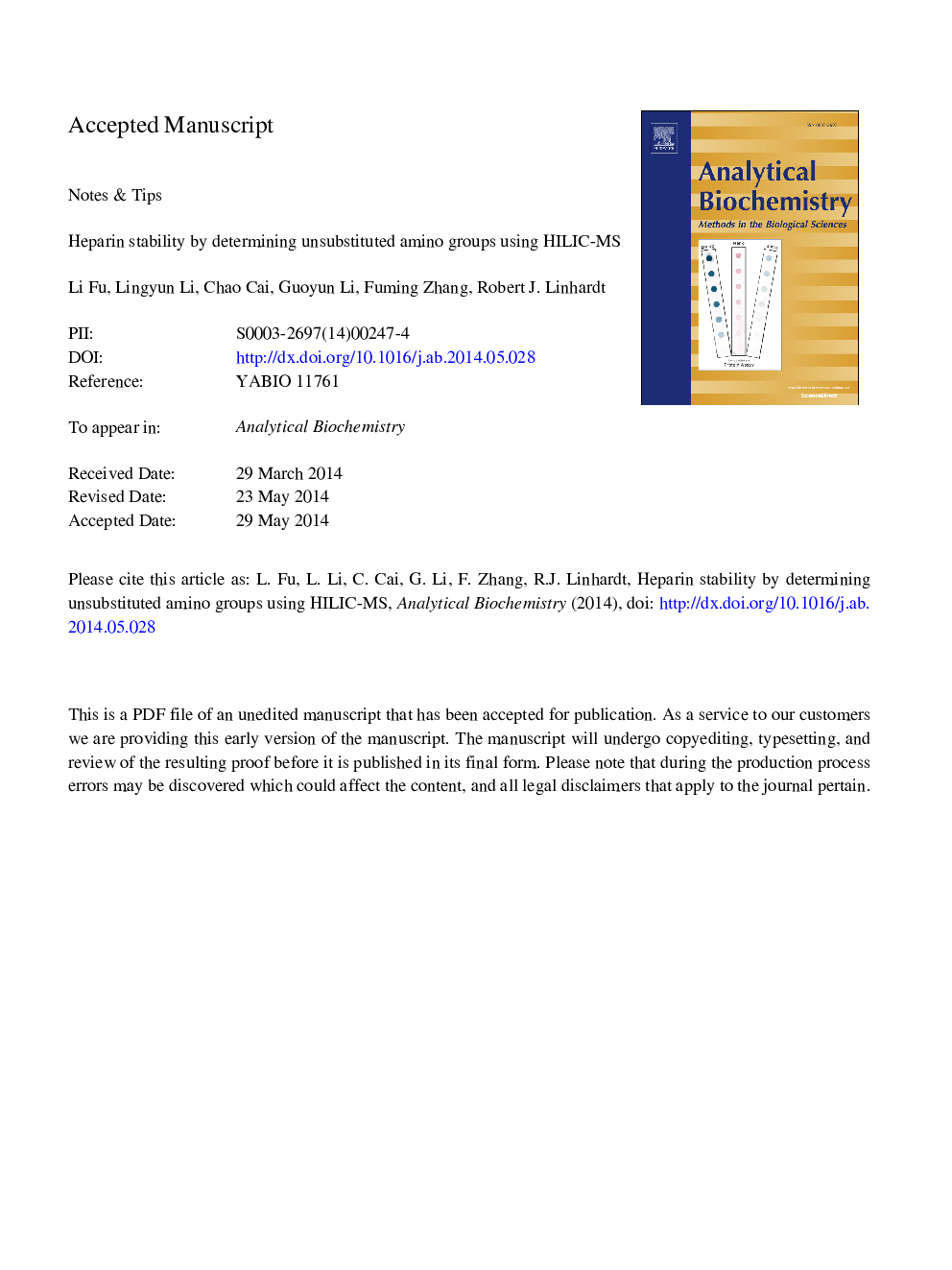| Article ID | Journal | Published Year | Pages | File Type |
|---|---|---|---|---|
| 7559160 | Analytical Biochemistry | 2014 | 13 Pages |
Abstract
The thermal instability of the anticoagulant heparin is associated, in part, with the solvolytic loss of N-sulfo groups. This study describes a new method to assess the increased content of unsubstituted amino groups present in thermally stressed and autoclave-sterilized heparin formulations. N-Acetylation of heparin samples with acetic anhydride-d6 is followed by exhaustive heparinase treatment and disaccharide analysis by hydrophilic interaction chromatography mass spectrometry (HILIC-MS). The introduction of a stable isotopic label provides a sensitive probe for the detection and localization of the lost N-sulfo groups, potentially providing valuable insights into the degradation mechanism and the reasons for anticoagulant potency loss.
Related Topics
Physical Sciences and Engineering
Chemistry
Analytical Chemistry
Authors
Li Fu, Lingyun Li, Chao Cai, Guoyun Li, Fuming Zhang, Robert J. Linhardt,
